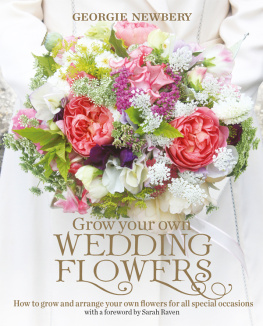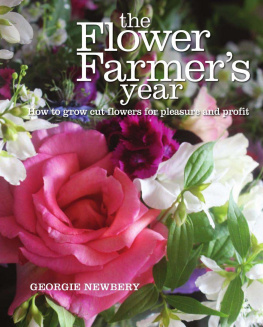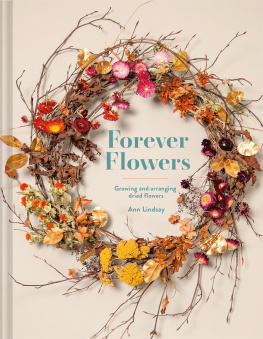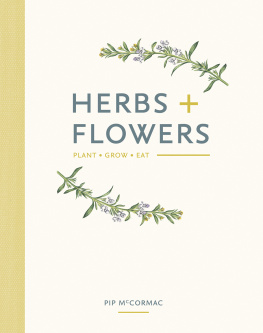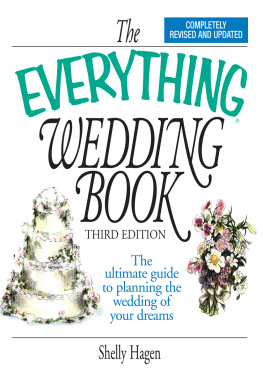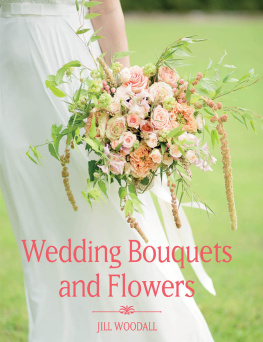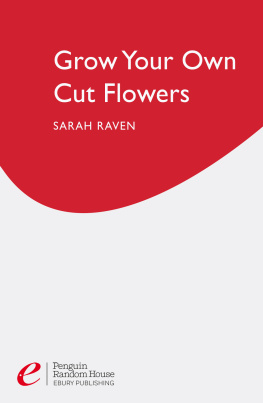

To my parents, Gilly and Nigel Newbery
Gilly, the gardener and florist, who taught me that if you just get on and do something then youll get much further than if you first sit about wondering if its possible or not.
Nigel, the thinker, who is still trying to teach me that if I think while I do, then I can be strategically ready for barriers I will inevitably hit if Ive not prepared for them in advance.
Acknowledgements
Writing a book while running a business is a triumph of the desire to write over common sense and time constraints. Because I take centre stage where the press, and therefore credits, for Common Farm Flowers is concerned, publicity-wary Fabrizio is sometimes sidelined. And yet, without his support and encouragement, it would not be possible for me to snatch my writing time from family breakfasts and happy Sundays. (I write this while he has taken the kids off to see Sweet Track, the Neolithic road across the Somerset Levels, and I have the house to myself: fire lit, Bach playing, kitchen table mine alone.) His is the commonsense practicality grounding my flights of floral fancy. Without his digging, compost moving, mulching, rabbit-proofing, fencing, gating, mowing and doing most of the cooking, Common Farm Flowers and my flower-related books would not exist.
The rest of the Common Farm Flowers team too deserve all my thanks: Sharon, Emily, Ann, Phil, Nic and Karen.
And thanks to Alethea and Jayne, the editor and designer of this book, who turn my cursive chat into something that is both a reference resource and the inspiration to others that I intend it to be.
As a gardener who has grown cut flowers for 20 years, I can totally see why many of us love the idea of growing all the flowers for our own weddings. Its hugely satisfying from seed to bunch or flower crown and youll have a cut-flower patch humming with bees in the meantime. Then theres the scent of real garden flowers and the twist and turn of a stem, which you rarely get in flowers commercially grown; not to mention the small fortune you can save by growing and arranging your own.
Its possible to do and I hugely recommend it, but its worth having some advice and expertise to set you on the right track. Its good to know how many flowers youll need and how to get them ready on the right day: how to cut, condition and arrange them. Thats exactly what this good and useful book will tell you. Georgie has kept it simple the gardening information given in an easy-to-digest, matter-of-fact way; the cutting and conditioning advice really useful for someone who might be an experienced gardener but might not have spent much time cutting their plants for posies or bouquets. How much space do you need to grow a wedding? How many stems do you need for wedding flowers? How long do they need to condition before being used in floristry? Thats all here.
Georgie describes herself as a gardener rather than a horticulturalist, and her floristry is all self-taught. If she can grow flowers for over 50 weddings a year, then her advice and experience is just what will help you to grow your own successfully for your wedding day.
Sarah Raven
www.sarahraven.com
Imagine a wedding, and what do you see? A bride and groom; happy, smiling faces... and flowers. Ill bet the third thing you think of when you picture a wedding is the flowers. Flowers frame a wedding, enclosing the happy couple in a bower of loveliness. Ive never heard of a wedding that didnt have at least a bouquet for the bride and a buttonhole for the groom. Flowers are in almost every photograph of a wedding dressing the people, the ceremony, the aisle, the tables, even the lavatories! What would a wedding be without flowers?
Yet wedding flowers can be enormously expensive. And rightly so. Ask a florist to arrange even just a brides bouquet, three bridesmaids posies, five buttonholes, and (for a small wedding) perhaps three table centrepieces, and that florist will probably be up at 6am creating the most immaculate and exquisite arrangements. Good florists know how important the flowers are to a bride and groom, and go to great lengths to make sure that wedding flowers are the most beautiful confections they make. The roses must be just right open, but not going over; the trailing honeysuckle exquisite; the brides bouquet so lovely the florist can hardly bear to give it away. So, yes, even for a small wedding scheme, flowers created by a professional florist should be expensive.
But wedding flowers arent just financially pricey. Couples are becoming more concerned about the environmental cost of their nuptials. They dont want their happy celebrations to be filled with flowers doused in chemicals and flown in from far, far away. They want their wedding day to be beautiful, but not at an unsustainable cost to the environment.
So more and more couples are looking for locally grown flowers. And those with gardens, time, inclination, helpful relatives... might be looking to grow those flowers themselves. After all, back in the day, the grannies did all the wedding flowers, with blooms grown by the grandads. For my wedding my mother wandered my late-autumn garden and put together a bouquet of one nerine lily, old mans beard, blackberries, purple dogwood leaves, acorns and oak leaves. It cost nothing but a little of her kind time, and a stretch of ribbon to tie it all.

A brides hand-tied bouquet with garden roses for an early-summer wedding.

Jam-jar posies can be stunning in a wedding scheme.
This book is designed to be a practical guide to growing and arranging wedding flowers for yourself, whatever season you plan to hold your wedding in. It will show you how to plan, grow, cut, condition and arrange the flowers for your wedding from table centrepieces to a beautiful hand-tied brides bouquet.
Whether your aim is just to keep your flower budget under control, or your dream is to grow your whole wedding scheme, this is the book for the home-growing bride and groom: the couple who dont want their wedding to cost the earth.
How to use this book
First theres the gardening, but theres also the planning for cutting, conditioning and arranging your flowers. How many stems will you need? How much space to grow them? Where should you put your flowers when youve cut them? Ive aimed to cover all this in these pages. The point of this book is that you should feel confident, when it comes to the days before your wedding, that the flowers youve grown can be cut, conditioned and turned into arrangements, in plenty of time, without any last-minute adrenaline rushes.
Next page
